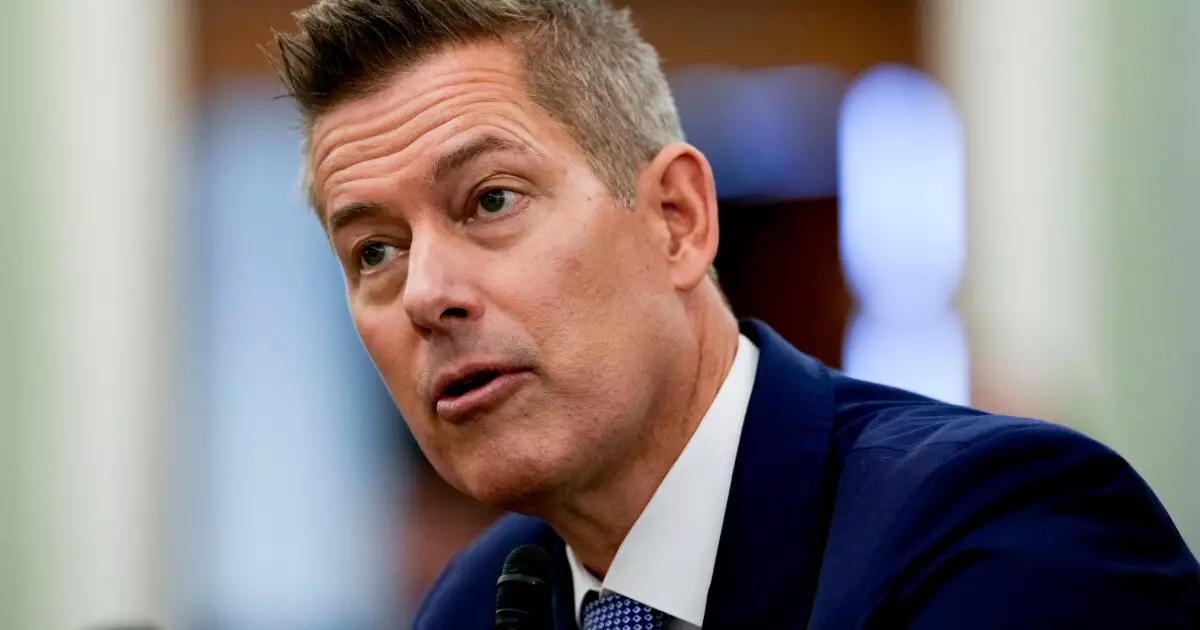As the legislative support initiated under President Biden begins to dwindle, American transit systems are stepping into a precarious landscape defined by increasing bureaucratic demands and ambiguous federal directives. The recent communications from U.S. Secretary of Transportation, Sean Duffy, to transit authorities like the New York Metropolitan Transportation Authority (MTA) symbolize a troubling shift towards a more stringent oversight model that could cripple the already beleaguered public transit sector. With phrases like “ensure a safe and clean environment” coupled with threats of federal funding enforcement, these letters serve as a wake-up call for cities striving to recover from the fallout of the COVID-19 pandemic.
The transit industry is in crisis, grappling with budgetary pressures that have emerged sharply due to plummeting fare revenues over the past few years. The pandemic caused devastating losses that have yet to be fully repaired—passenger ridership may be slowly rebounding, but the scars remain evident in the sobering reality of multimillion-dollar budget gaps facing many municipalities, such as the staggering $200 million shortfall projected by the Southeastern Pennsylvania Transportation Authority (SEPTA). While a relatively modest increase in federal funds—an extra $82 million for fiscal year 2025—may look encouraging on paper, it does not reflect the gravity of the challenges ahead.
Escalating Bureaucracy and Compliance Woes
The new federal directives issued demand swift compliance, essentially transforming public transit operations into a politically charged field of obligation and scrutiny. The stakes have shifted dramatically; this isn’t merely about funding but navigating the labyrinth of safety requirements and performance metrics that threaten to overwhelm transit authorities. The pressure is particularly palpable in sanctuary cities like Chicago, where federal money is critical to ongoing transit projects, including the expansive $12 billion O’Hare airport initiative. As transit authorities hold their breath, the question becomes clear: will essential projects see the light of day, or will they crumble under the weight of federal oversight?
Clarity is increasingly hard to find, especially when reconsideration of previously awarded projects looms as a distinct possibility. The Trump administration’s freeze on transit funds released some startling guidance that could redefine or even terminate projects essential for enhancing accessibility and environmental equity. Polly Trottenberg, the former Deputy Secretary of Transportation, cautioned that “this is the first time an administration has tried to cancel or re-scope projects en masse.” Given that many of these initiatives have cleared rigorous competitive application processes, the potential upheaval not only undermines transit stability but casts a long shadow over the future of public investment.
The Unequal Burden on Cities
It is crucial to recognize how these federal moves disproportionately impact urban centers while rural areas seem to slip through the cracks. Urban dwellers face a double-edged sword—progress in public transportation that is vital for economic revitalization is now shackled by legislative red tape and a relentless focus on compliance over needs. The cities that historically relied on progressive transit solutions for mobility and economic growth find themselves at the mercy of a government less concerned about their local realities and more focused on ideological pursuits.
The narratives influencing funding decisions appear entrenched in political maneuvering rather than empirical needs, creating a chasm between financial pledges made by federal entities and the actual support needed on the ground. Cities fear that failing to meet the new benchmarks will translate to diminished funds, which will ultimately translate into diminished services that affect the most vulnerable populations disproportionately. What good is a modal shift towards green transit solutions if the very systems struggling to deliver them are starved of the necessary resources?
A Call for Conservative Pragmatism
In light of the unfolding crisis within public transportation, it’s essential that a center-right approach prioritizes pragmatic solutions over ideological pursuits. The mounting burdens imposed by federal guidelines signal not only a need for government agencies to adapt but also a crucial moment for local authorities to champion their needs articulately and fiercely. Urban areas must unite to navigate these regulations without losing sight of their primary goal—the delivery of reliable and robust public transit for all citizens.
It may be tempting for lawmakers to retreat into political posturing when it comes to funding allocation. However, if they truly aspire to serve their constituents and demonstrate responsible governance, they must foster a collaborative relationship with transit authorities rather than drown them in compliance obligations. A future that embraces constructive engagement, streamlined processes, and respect for local governance will be critical if we wish to ensure public spaces rebound as vibrant hubs rather than bureaucratic labyrinths.

